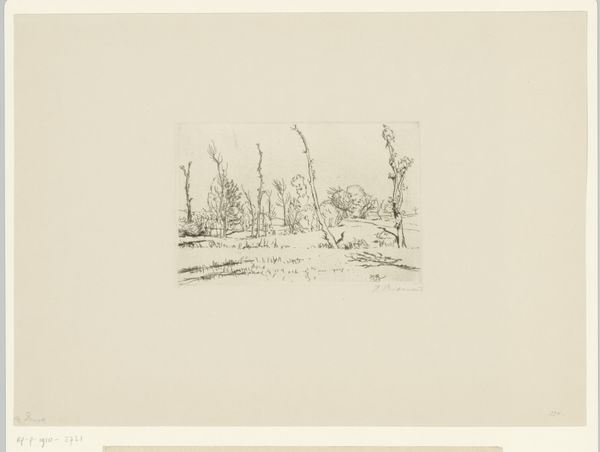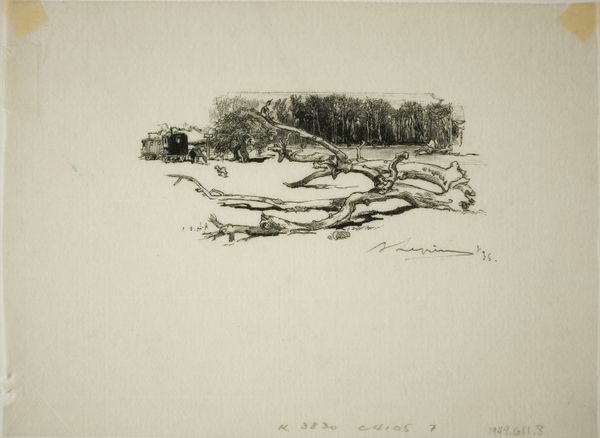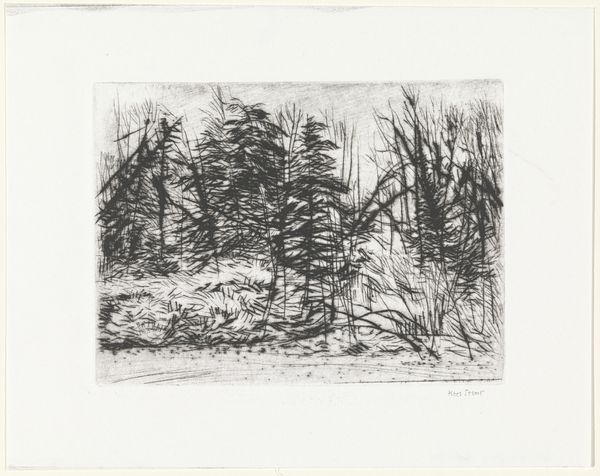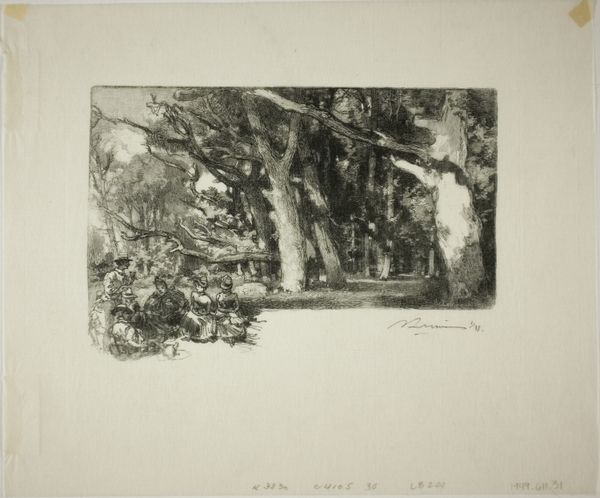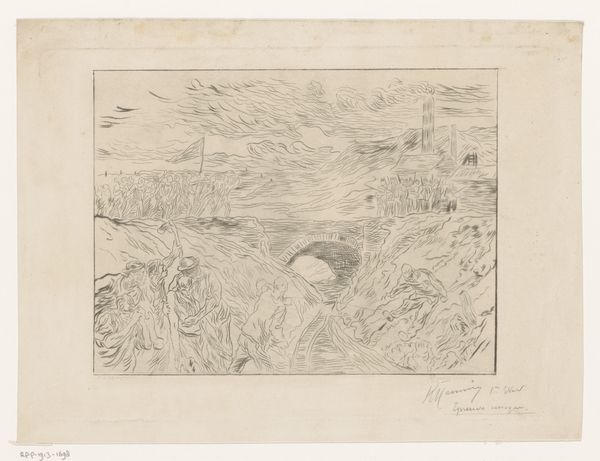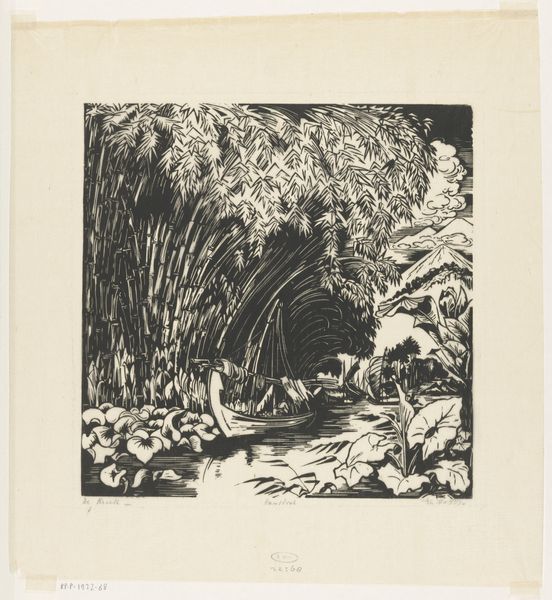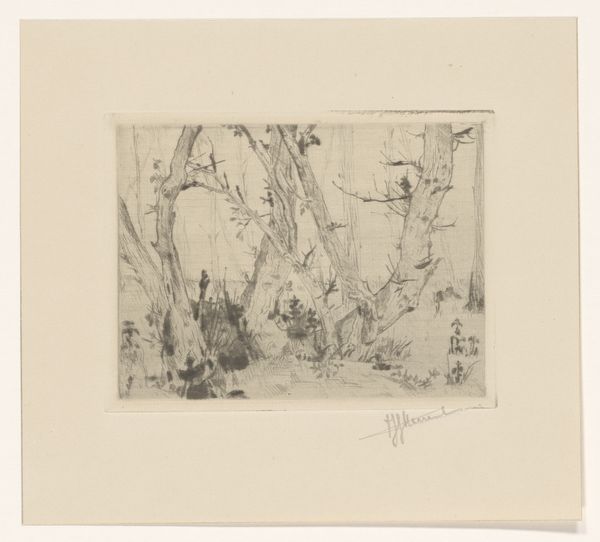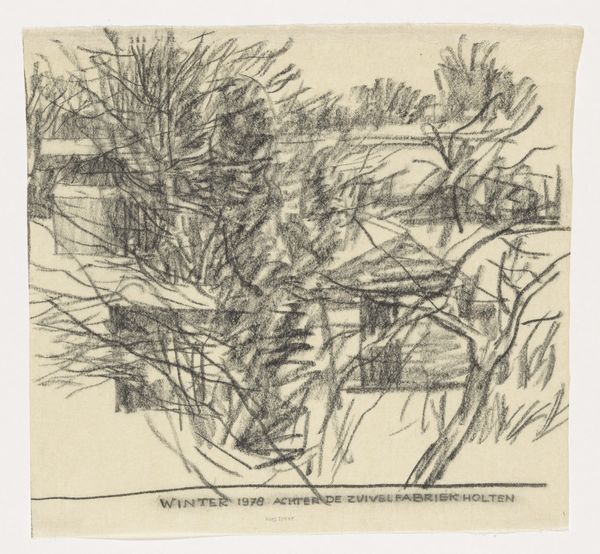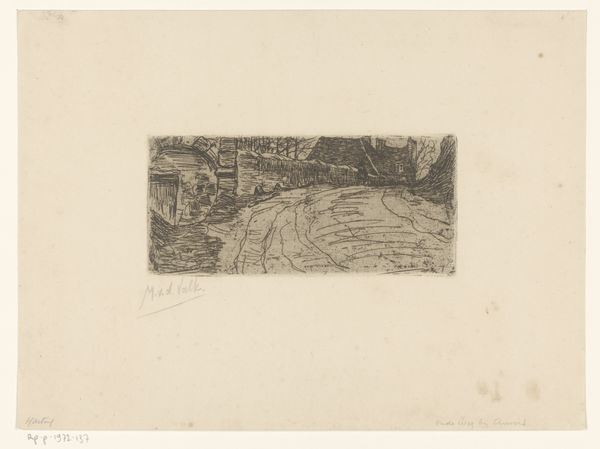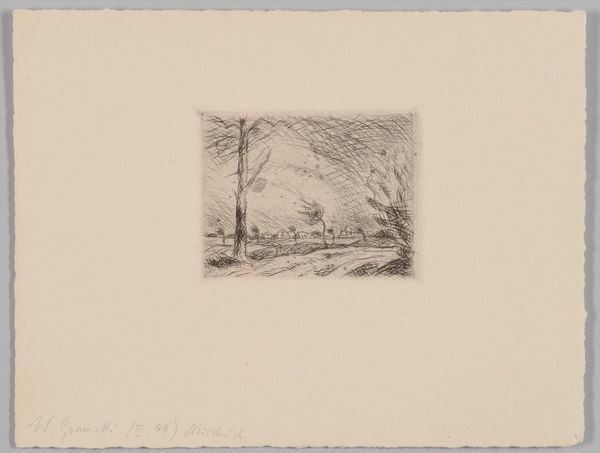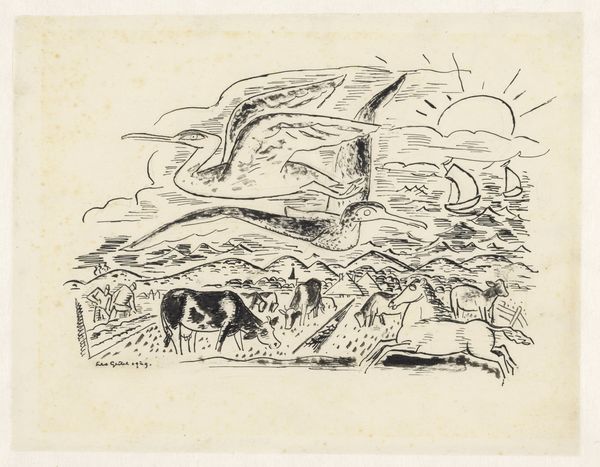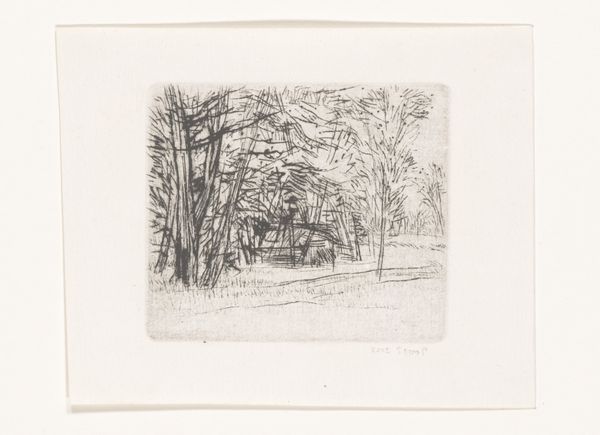
drawing, print, etching, ink
#
drawing
# print
#
etching
#
landscape
#
ink line art
#
ink
Dimensions: height 198 mm, width 238 mm, height 105 mm, width 148 mm
Copyright: Rijks Museum: Open Domain
Curator: Initially, I am struck by the delicate and ephemeral quality of this image. It's titled "Weitje Vondelpark" by Lau Heidendael, created between 2002 and 2008, rendered in ink as an etching or print. Editor: An interesting choice to use such a meticulous process to depict something so seemingly wild. The lines are almost frantic in their density, especially in the clustered trees. There's a clear tension between control and untamed nature. Curator: Absolutely, the tension plays out on many levels. Heidendael's choice of etching highlights the labor involved in capturing what appears to be a fleeting moment in the Vondelpark. It challenges our notions of artistic labor, particularly landscape art. Consider the social role of parks – public spaces intended for leisure, contemplation, even political gathering. Editor: So the act of capturing this scene, not just as a simple sketch but as an editioned print suggests something about value? Who decides what's worthy of this painstaking translation into multiples, for whom are these images intended? It speaks to the art market and its complicated relationship with everyday life, even depictions of something seemingly inconsequential like a thicket in the Vondelpark. What does this particular part of the park offer? The name implies this is a wet area. What part does water play here in the social ecosystem of the Vondelpark? Curator: It also makes one consider the materials: the paper itself, the ink. The raw materiality adds depth to our interpretation of the scene. What grade of paper was chosen? How does that change its impact to someone who would view the physical object? Was a specialized paper used, such as whatman paper, that might have some symbolic association to the scene represented in the etching itself? Editor: Thinking of audience, etchings have a long history as relatively accessible art forms. Prints make images available to wider audiences, not just wealthy patrons. This is key when dealing with images of public places like Vondelpark, available to every citizen of Amsterdam regardless of status. In selecting a site, does the artist make a socio-political comment simply by elevating that public park’s aesthetic value through an artistic piece that could hang in any person's home? Curator: It's fascinating to consider how the convergence of place, medium, and artistic labor shapes our perception, transforming a simple park scene into something far richer. Editor: Yes, looking beyond the immediate image towards its material construction and the circumstances of its creation truly unlocks the many layers of meaning within.
Comments
No comments
Be the first to comment and join the conversation on the ultimate creative platform.
